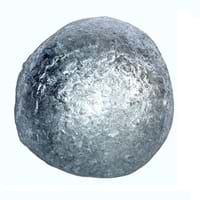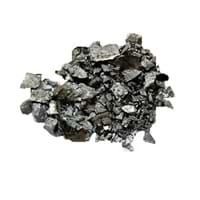Zinc Tin Comparison
Periodic Table
Symbol
Zn
Sn
Group Number
12
6
14
4
Period Number
4
5
Block
d block
p block
Element Family
Transition Metal
Post-Transition
CAS Number
7440666
24
7440315
99+
Space Group Name
P63/mmc
I41/amd
Space Group Number
194.00
5
141.00
7
Facts
Interesting Facts
- Zinc metal found (obtain) in many forms like granules, foil, dust and in a powder form.
- The leading producers of Zinc metal are Australia, Canada, China, U.S.A and Peru.
- In the list of most abundant element Tin is ranked 49th.
- Tin metal does not react with water as well as does not corrode in it.
Sources
Earth's crust, Found in Minerals, Mining, Ores of Minerals
Found in Minerals, Mining
History
Who Discovered
Indian metallurgists
Unknown
Discovery
Before 1000 BCE
Before 3500 BC
Abundance
Abundance In Universe
3 * 10-5 %
11
4 * 10-7 %
20
Abundance In Sun
~0.0002 %
10
~0.0000009 %
19
Abundance In Meteorites
0.02 %
12
0.00 %
24
Abundance In Earth's Crust
0.01 %
16
0.00 %
34
Abundance In Oceans
0.00 %
10
0.00 %
26
Abundance In Humans
0.00 %
6
0.00 %
13
Uses
Uses & Benefits
- It is mainly used for Galvanizing other metals.
- It is also used for manufacturing die-casting and it is very essential for automobile industry.
- Tin-niobium alloy is used for producing superconducting magnets.
- Tin salt known as a tin II chloride, it is used as a mordant and as a reducing agent for dyeing calico and silk.
Industrial Uses
Electrical Industry, Electronic Industry
Automobile Industry, Chemical Industry, Food Industry
Medical Uses
Pharmaceutical Industry
Dentistry
Other Uses
Alloys
NA
Biological Properties
Toxicity
Highly Toxic
Non Toxic
Present in Human Body
Yes
Yes
In Blood
7.00 Blood/mg dm-3
6
0.38 Blood/mg dm-3
10
In Bone
170.00 p.p.m.
6
1.40 p.p.m.
16
Physical Properties
Melting Point
419.58 °C
99+
231.90 °C
99+
Boiling Point
907.00 °C
99+
2,270.00 °C
99+
Appearance
Physical State
Solid
Solid
Color
Silvery Gray
Silvery White
Luster
Metallic
NA
Hardness
Mohs Hardness
2.50
14
1.50
18
Brinell Hardness
327.00 MPa
32
50.00 MPa
99+
Speed of Sound
3,850.00 m/s
18
2,730.00 m/s
32
Optical Properties
Refractive Index
1.00
2
Not Available
Reflectivity
80.00 %
5
Not Available
Allotropes
No
Yes
α Allotropes
Not Available
Grey Tin (alpha Tin, Tin Pest)
β Allotropes
Not Available
White Tin (Beta Tin)
γ Allotropes
Not Available
Rhombic Tin (gamma Tin)
Chemical Properties
Chemical Formula
Zn
Sn
Isotopes
Known Isotopes
25
14
35
4
Electronegativity
Pauling Electronegativity
1.65
19
1.96
8
Sanderson Electronegativity
2.23
6
1.49
15
Allred Rochow Electronegativity
1.66
7
1.72
4
Mulliken-Jaffe Electronegativity
1.65
11
2.21
3
Allen Electronegativity
1.59
22
1.82
11
Electropositivity
Pauling Electropositivity
2.35
35
2.04
99+
Ionization Energies
1st Energy Level
906.40 kJ/mol
6
708.60 kJ/mol
33
2nd Energy Level
1,733.30 kJ/mol
27
1,411.80 kJ/mol
99+
3rd Energy Level
3,833.00 kJ/mol
12
2,943.00 kJ/mol
30
4th Energy Level
5,731.00 kJ/mol
11
3,930.30 kJ/mol
99+
5th Energy Level
7,970.00 kJ/mol
9
7,456.00 kJ/mol
13
6th Energy Level
10,400.00 kJ/mol
9
Not Available
7th Energy level
12,900.00 kJ/mol
9
Not Available
8th Energy Level
16,800.00 kJ/mol
6
Not Available
9th Energy Level
19,600.00 kJ/mol
8
Not Available
10th Energy Level
23,000.00 kJ/mol
10
Not Available
11th Energy Level
26,400.00 kJ/mol
11
Not Available
12th Energy Level
29,990.00 kJ/mol
11
Not Available
13th Energy Level
40,490.00 kJ/mol
5
Not Available
14th Energy Level
43,800.00 kJ/mol
6
Not Available
15th Energy Level
47,300.00 kJ/mol
8
Not Available
16th Energy Level
52,300.00 kJ/mol
9
Not Available
17th Energy Level
55,900.00 kJ/mol
10
Not Available
18th Energy Level
59,700.00 kJ/mol
11
Not Available
19th Energy Level
67,300.00 kJ/mol
10
Not Available
20th Energy Level
171,200.00 kJ/mol
1
Not Available
21st Energy Level
179,100.00 kJ/mol
1
Not Available
Electrochemical Equivalent
1.22 g/amp-hr
99+
1.11 g/amp-hr
99+
Electron Work Function
4.33 eV
17
4.42 eV
16
Other Chemical Properties
Anti Corrosion, Chemical Stability, Ionization, Radioactive Isotopes
Ionization, Solubility
Atomic Properties
Atomic Number
30
99+
50
99+
Electron Configuration
[Ar] 3d10 4s2
[Kr] 4d10 5s2 5p2
Crystal Structure
Hexagonal Close Packed (HCP)
Tetragonal (TETR)
Crystal Lattice
HCP-Crystal-Structure-of-Zinc.jpg#100
TETR-Crystal-Structure-of-Tin.jpg#100
Atom
Number of Protons
30
99+
50
99+
Number of Neutrons
35
99+
69
99+
Number of Electrons
30
99+
50
99+
Radius of an Atom
Atomic Radius
134.00 pm
99+
140.00 pm
38
Covalent Radius
122.00 pm
99+
139.00 pm
99+
Van der Waals Radius
139.00 pm
99+
217.00 pm
23
Atomic Weight
65.38 amu
99+
118.71 amu
99+
Atomic Volume
9.20 cm3/mol
99+
16.30 cm3/mol
32
Adjacent Atomic Numbers
Valence Electron Potential
38.90 (-eV)
99+
83.50 (-eV)
14
Lattice Constant
266.49 pm
99+
583.18 pm
7
Lattice Angles
π/2, π/2, 2 π/3
π/2, π/2, π/2
Lattice C/A Ratio
Not Available
Not Available
Mechanical Properties
Density
Density At Room Temperature
7.14 g/cm3
99+
7.37 g/cm3
99+
Density When Liquid (at m.p.)
6.57 g/cm3
37
6.99 g/cm3
34
Tensile Strength
Not Available
Not Available
Viscosity
Not Available
Not Available
Vapor Pressure
Vapor Pressure at 1000 K
Not Available
0.00 (Pa)
17
Elasticity properties
Shear Modulus
43.00 GPa
18
18.00 GPa
36
Bulk Modulus
70.00 GPa
19
58.00 GPa
20
Young's Modulus
108.00 GPa
19
50.00 GPa
36
Poisson Ratio
0.25
24
0.36
8
Other Mechanical Properties
NA
Ductile, Malleable
Magnetic Properties
Magnetic Characteristics
Specific Gravity
6.90
99+
7.31
99+
Magnetic Ordering
Diamagnetic
Diamagnetic
Electrical Properties
Electrical Property
Conductor
Superconductor
Resistivity
59.00 nΩ·m
40
115.00 nΩ·m
28
Electrical Conductivity
0.17 106/cm Ω
12
0.09 106/cm Ω
23
Electron Affinity
0.00 kJ/mol
40
107.30 kJ/mol
8
Thermal Properties
Specific Heat
0.39 J/(kg K)
14
0.23 J/(kg K)
28
Molar Heat Capacity
25.47 J/mol·K
39
27.11 J/mol·K
20
Thermal Conductivity
116.00 W/m·K
14
66.80 W/m·K
25
Critical Temperature
Not Available
Not Available
Thermal Expansion
30.20 µm/(m·K)
11
22.00 µm/(m·K)
20
Enthalpy
Enthalpy of Vaporization
7.32 kJ/mol
99+
290.40 kJ/mol
32
Enthalpy of Fusion
7.32 kJ/mol
99+
7.03 kJ/mol
99+
Enthalpy of Atomization
129.70 kJ/mol
99+
301.30 kJ/mol
35
Standard Molar Entropy
41.60 J/mol.K
36
51.20 J/mol.K
29
|
||
|
||
|
|
||
|
||
|












